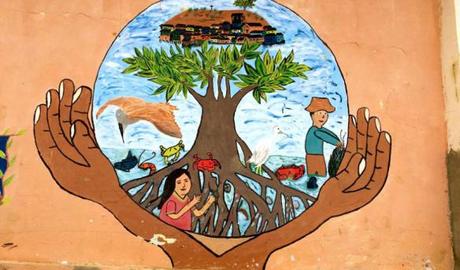GR: Ecosystem restoration is difficult and expensive. The mangrove example provided here shows how easy it is for even large-scale efforts to fail. One study I read found that restoration of one acre of shrubland can cost $100,000 or more. Preservation is extremely cheap compared to restoration. Perhaps one day we humans will become a responsible species and begin devoting a large part of our wealth and energy to restoring the lands and seas that we have damaged.
“There is an urgent need to address the global degradation of coastal ecosystems, but are mass mangrove planting initiatives sustainable?”
 “In recent years, hundreds and sometimes thousands of volunteers have been involved in mass mangrove planting efforts, gaining media recognition and even earning entries into the Guinness Book of World Records. This has drawn attention to the urgent need to address the global degradation of coastal ecosystems. But are these planting initiatives sustainable? Do they have the desired impact? In short, do they work?
“In recent years, hundreds and sometimes thousands of volunteers have been involved in mass mangrove planting efforts, gaining media recognition and even earning entries into the Guinness Book of World Records. This has drawn attention to the urgent need to address the global degradation of coastal ecosystems. But are these planting initiatives sustainable? Do they have the desired impact? In short, do they work?
“Coastal communities are first to face the impacts of coastal degradation – reduced flood protection, decreased water quality, extreme soil erosion and a rapid decline in the variety and abundance of food sources (many of which come from mangroves in the tropics). Mass mangrove plantings should help address these challenges in certain areas, but instead many restoration efforts worldwide (for example, in the Philippines) are failing.
What’s going wrong?
“There are several issues. Restoring a mangrove is a complex process that needs to be founded on the principles of ecosystem management. Often, fast-paced and large-scale ‘restoration events’ are not necessarily scientifically robust in terms of which mangrove species should be restored, and where.” –IUCN (Continue reading: Mass mangrove restoration: Driven by good intentions but offering limited results | IUCN.)

